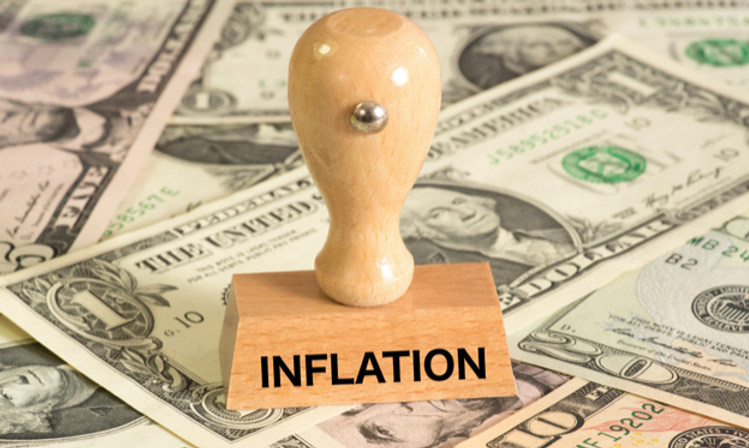
Inflation is clearly a major problem in our country now. Our current inflation rate is 7.9% compared to 1.81% in 2019. How did we get here and what exactly causes inflation are critical components to understand. Let me take a few moments to break down what has happened:
How is Inflation Caused?
Inflation is simply an increase in prices and fall of purchasing power. Emotionally it causes us to feel like we are running up a downward moving escalator. Wages may increase but the price of goods keeps increasing faster, leaving us with less and less real purchasing power. But how does inflation start? Quite simply, inflation is caused by a mismatch between supply and demand. If the demand for goods is higher than the supply of goods the price will increase. Simple enough. So what caused this mis match to occur is a great starting point to understand the current inflation dynamics.
First, the US economy shut down a large part of capitalism (free exchange of goods) during the Covid pandemic. This is like throwing a giant wrench into the gears of a complex and well running machine. Our problems today are a direct result of reducing free markets and capitalism. This simultaneously reduced the supply of goods and reduced some demand. This almost immediately led to the 2020 recession. Left unchecked we would have expected massive layoffs, bankruptcies, a longer market decline period and ultimately larger market and economic pain. With no government intervention, the result would have been a large reduction in both Supply and Demand of goods causing little net inflationary changes. However; the government chose to ‘backstop’ the economy and issue massive amounts of money via PPP Loans, Grants and other Fed induced channels to funnel money into the economy. The economic reaction was as expected…DEMAND shot through the roof. In 2020-2021 we operated in an economy of less SUPPLY and massive DEMAND. Supply was still down because most businesses first reaction was expecting a recession, and thus trimming inventories or simply not able to operate via regulations, shut downs, reduced labor force, reduced production, etc… This point is highlighted by a 25.2% increase in retail sales from February 2020 and February 2022. Demand was MASSIVE! During this exact same time period, industrial production was up only 2.3% and the US had 1.6 million fewer jobs than it did pre-lockdown. 25.2% vs. 2.3% is a massive gap that jump started the inflation surge.
Second, the Federal Reserve increased the M2 Money Supply by over 40% since February 2020. This simply kicked the can down the road and masked the deeper issues created by the shut downs. It was another temporary sugar rush for the economy! What happens to kids when the sugar rush ends?? They crash. In this case, the crash will likely be a combination of low growth and higher than expected inflation for some time.
Third, the regulatory environment around key inflationary goods such as Energy have not been positive. Pulling permits and stopping projects does not send a message of confidence to energy producers. If you purchased or lease land to drill and all of a sudden the government revokes your permit…are you likely to go out and invest in drilling more? Of course not. In the current environment energy companies will be very hesitant to expand volume, given what they have experienced the past 12 months and what has been forecasted as the general tone against drilling actions. This concept has been re-enforced during discussions with management teams via earning calls. As a result, many goods have increased in price to offset the costs to transport goods as a result of energy prices increasing. While some of this increase could be attributed to the Russia-Ukraine war, the bulk of the inflationary pressure was set forth before any tensions, sanctions or risk of sanctions set in.
So how do we get out of this mess?
The only way out of a mess is to pick up the pieces that caused the mess in the first place. In short, we have 2 ways out of this mess:
1 – Supply side increases and we finally have enough supply to outweigh the demand
2 – Demand side decreases and we have less demand than supply
In a perfect world, we would concentrate a huge amount of effort on increasing supply. Adding sustainable productivity is the best way to combat inflationary pressures long term. Anything we can do as a country to increase the labor force, decrease regulations that inhibit production, incentivize added production of specific goods that underpin inflation (usually via tax benefits), and create a culture that embraces productivity is most beneficial. Increasing supply creates a win, win for the most amount of people.
The alternative to increasing supply is to decrease demand. Unfortunately, this is the easier path for governments to take. Decreasing demand will occur naturally as prices increase at some point. Eventually people can’t afford to take a trip cross country at $4 gas prices. They avoid buying the RV since gas is so high. The restaurant raises prices to offset wage increases and eventually less people eat out. Left to its own demise inflation will eventually self-correct. This self-correction is often experienced as an economic ‘recession’. Governments will generally take the stance of demand reduction by raising rates and other tighter monetary policy. Over time, the effect of higher rates on mortgages to business loans will eventually reduce economic activity and suppress demand. The combination of ‘natural’ demand declines combined with ‘fed policy’ demand declines will usually lead to both a decline in inflation AND a decline in the economy. Whether we enter recession or simply see a slowdown is largely dependent on the supply side and remains connected to the abilities of corporate America to increase production. We view a continued tug of war between Fed Policy and Corporate strength to play out in next few months.
With this logic in mind, it seems like we have 2 obvious paths that our economy could head down.
Path 1: Inflation continues and the Fed continues to hike rates more aggressively while also selling its balance sheet. This would result in a very likely recession during next 18 months.
Path 2: Inflation is peaking now and supply is finally starting to catch up. Demand is slowly cooling down from the stimulus induced buying frenzy of 2021 and things start to align by year end. The Fed starts to see this data and does not feel the need to continue tightening. Rates then correct downward a little and the economy gets a jolt.
We think the odds are about 50/50 between these 2 paths. We expect a rocky ride as the economic impacts of inflation and higher rates work through the system.
How to Invest?
Investing is completely dependent on your goals and timeline for those specific goals. If you need X amount of money this year for retirement income, then the plan will look different than if you need X amount of income 10 years from now. Our approach has always been highly customized to your needs for liquidity (distributions) at the exact time you will need them. We embrace diversification as a primary tool to balance out the shorter-term risks relative to your planning needs. We would expect rising rates to more severely impact ‘higher growth’ style investments. More aggressive portfolios would naturally expect a larger decline during the initial phases of rate hikes as the market adjust short term valuations for the higher discount rates. For most well-run companies, this is a short-term phenomenon. If cash flows continue to remain stable and grow over time, the math will eventually reward solid growth companies and investors that purchase at a reasonable price.
For this reason, we are opportunity seeking within some of the heaviest hit areas of the growth arena. We think opportunity is starting to present itself within some of the strongest growth names. As markets decline we will look to scoop up or rotate into high quality companies selling at good prices. When inflation normalizes, it is likely that these companies could move forward nicely and offer excess returns for client accounts.
For more moderate investors and income takers we continue to remain very balanced and hedge some inflation risk using selective exposures such as energy, basic materials, food and utilities to create added stability for the income streams. These areas offer high cash flows during inflationary periods and markets will often bid them up as ‘safer’ investments during times of concern. This is not our favorite area of exposure because the business models are often reliant upon commodity prices like Oil, Gas, Grains in order to maintain growing cash flows. Eventually when the tide changes and inflation recedes, we expect many of these areas to decline. As such, we must be careful to not overexpose into these areas for more than a short period of time. As energy prices go up, we continue to take some gains and re-deploy into other areas. One thing has been abundantly clear over the past few years – the value of sound asset management has increased greatly!
Using common sense for investing has always been a valuable tool. Over the next decade, common sense will go a very long way in a world that is likely to become more emotional and more disconnected from reality. Our ability to align sustainable investment management with your financial plan continues to be a recipe for long term success.
Disclosures
Index results such as the Wilshire 5000 and S&P 500 do not reflect management fees and expenses and you cannot typically invest in an index.
Evergreen Wealth Management, LLC is a registered investment adviser. Information presented is for educational purposes only and does not intend to make an offer or solicitation for the sale or purchase of any specific securities, investments, or investment strategies. Investments involve risk and unless otherwise stated, are not guaranteed. Be sure to first consult with a qualified financial adviser and/or tax professional before implementing any strategy discussed herein. Past performance is not indicative of future performance.
